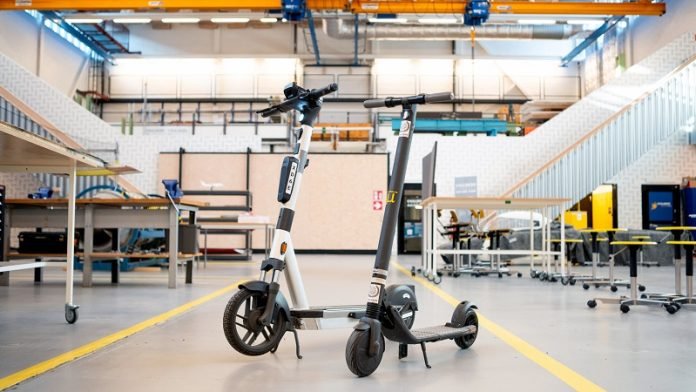
E-scooters have become a popular way to get around town, but not every e-scooter is the same, especially when it comes to safety.
A study by Marco Dozza and his team at Chalmers University of Technology in Sweden points out that the smaller, privately-owned e-scooters may not be as safe as their bigger, rental counterparts.
Why is this? It boils down to how they’re made.
The e-scooters that you can rent in cities are often built with larger wheels, better steering, and stronger brakes.
They’re also designed with better shock absorption. All these features make rental e-scooters safer when trying to avoid accidents.
On the other hand, e-scooters meant for personal use tend to be smaller, lighter, and foldable. While these features make them easy to carry and store, they could also make these scooters more dangerous, especially in emergency situations.
The study conducted trials comparing how well different vehicles – a large e-scooter, a light e-scooter, and bicycles (both with and without assistance) – could avoid a crash by braking or steering.
The findings?
Bikes were generally better at stopping quickly and safely, while the larger e-scooter had a slight edge over the smaller one in braking performance. However, when it came to steering to avoid a crash, there wasn’t a big difference between the vehicles. Still, riders felt more stable and secure on bicycles compared to e-scooters.
A surprising insight from the research is that a lot of e-scooter accidents happen on someone’s first ride.
This might be because people overestimate their ability to handle e-scooters, thinking it will be just like riding a bike. This expectation mismatch can lead to crashes because the braking on e-scooters doesn’t always work as well as expected.
However, it’s not all bad news for the heavier rental e-scooters. Even though they might cause more damage in a crash due to their weight, they’re generally safer because they brake better. But remember, in slippery conditions like wet roads or icy paths, even these might not be safe enough.
If you’re caught in a tight spot while riding an e-scooter, it might actually be safer to try and steer out of the way rather than braking.
This is especially true for the smaller, lighter e-scooters, which have longer stopping distances than bikes or the larger e-scooters. But, the study also found that people are usually less comfortable trying to dodge obstacles on an e-scooter than they are on a bike.
Dozza’s advice for new e-scooter riders is straightforward: practice makes perfect. Before you find yourself in a dangerous situation, take some time to practice braking and steering in a safe, open area.
This way, you won’t be caught off guard by how your e-scooter handles in an emergency.
In the end, the study not only sheds light on the different safety aspects of e-scooters but also provides valuable data that could help improve how these vehicles are designed and used in the future.
Whether it’s making automatic braking systems more reliable or planning safer routes for micromobility vehicles, the goal is to make e-scooters a safer option for everyone.



